If you’ve spent any time on the internet, you’ve probably read dozens of top 10 style blogs. I figure that you’ve already read a couple of these about guitar, and you already have all of the essential things like picks, a tuner, capo, etc. While those blogs are great and can be helpful, this blog isn’t an intro to guitar accessories; this is the 2.0 list of accessories.
In this blog, I will talk about the top 10 accessories that I wish someone would have told me about years ago. These are things that I own now, but I wish I would have started using them so much sooner.
Trust me. If you’re a guitarist, this list is a game-changer.
#1 Spatula
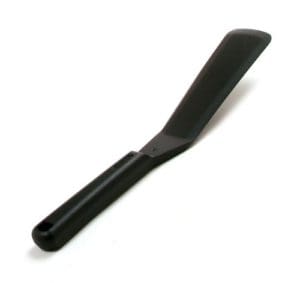
Yes, you heard me right. I did say that the number one thing on this obscure list is a spatula, the same utensil that you have in your kitchen that you use to flip your omelets in the morning.
Why would guitarists need a spatula? Let me tell you a quick story that will help you understand.
A couple of years ago, I was playing guitar at a massive event in downtown Miami. It was a sold-out event with over 15,000 people in attendance. Wow… To give you a little perspective, I grew up playing bass in a small church of 50 people in a tiny town in Kentucky.
Fast forward, and I’m in downtown Miami on this huge stage right next to the ocean playing in front of what seems like an infinite crowd of people. I was a little nervous, to say the least. Ok, I was very nervous, but I was also really prepared—or so I thought.
For this event, I was playing electric guitar for an amazing worship artist named Jason Upton. Leeland was also there, along with a ton of Latino worship artists such as Marcos Brunet, Ana Paula Valadão Bessa, Marcos Barrientos, Daniel Calveti, and many more.
Leeland was playing right before us, and he asked me if he could use my pedalboard during their set. I said yes, and then the worst thing that could have possibly happened actually happened: my pedalboard stopped working mid-song. Without missing a beat, Leeland asked me to come on stage and fix my pedalboard for him while the band was still playing.
I have never been so embarrassed in my life.
I had no clue what was going on because I hadn’t had any problems with my pedalboard, so I started troubleshooting. After what felt like an eternity, I discovered that one of my patch cables going to a pedal, or maybe even the pedal itself stopped working, and I needed to bypass to make the signal chain work again.
The only problem was that I was using industrial strength Velcro and it was covering the entire bottom of a large pedal. This made it extremely difficult to get off (I do this to all of my pedals to deter TSA from taking them apart and to keep them from getting slung everywhere or broken during flights). My pedalboard looked like a master game of Tetris, and there was no way I was getting this pedal off without a fight.
Eventually, I was able to get it off and do a temporary fix, but I ended up having to bypass a lot of my pedals because a patch cable was bad and I didn’t have any backups (another hard lesson that I learned, but we’ll get to this later). When I got home from the event, I started brainstorming practical things that I could do to make sure that this wouldn’t happen again.
And you know what my brilliant idea was?
You guessed it: a spatula. lol
Now, I keep this spatula underneath my pedalboard all the time. I put a small piece of Velcro on the handle of the spatula and put another piece on the bottom of my pedalboard so it will just stay there when I’m not using it. I can’t tell you how much of a life-saver this thing has been.
What I love about this specific spatula is that it is very sturdy, tiny, and it doesn’t take up a lot of room underneath of my pedalboard.
#2 Headphone Adapters
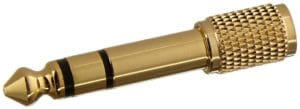 This might be one of the most underrated guitar accessories of all time, but I believe it’s one of the most important. I can’t tell you how many places that I have played that the In-Ear Monitors (IEMs) cut out in the middle of a song because of a cheap adapter. When you are playing music, it is crucial that you are able to hear yourself and the rest of the band.
This might be one of the most underrated guitar accessories of all time, but I believe it’s one of the most important. I can’t tell you how many places that I have played that the In-Ear Monitors (IEMs) cut out in the middle of a song because of a cheap adapter. When you are playing music, it is crucial that you are able to hear yourself and the rest of the band.
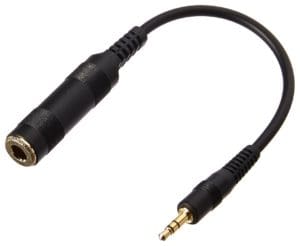 I keep both of these high-quality Sennheiser adapters in my gig bag, and I use them almost every time I play. These headphone adapters feel sturdy, and they both have tight secure connections. I’ve never had these cut out while I’m playing, and I’ve been using them for over two years now.
I keep both of these high-quality Sennheiser adapters in my gig bag, and I use them almost every time I play. These headphone adapters feel sturdy, and they both have tight secure connections. I’ve never had these cut out while I’m playing, and I’ve been using them for over two years now.
What I use: 1/4” to 1/8” Adapter // 1/8” to 1/4” Adapter
#3 IEM Cleaner
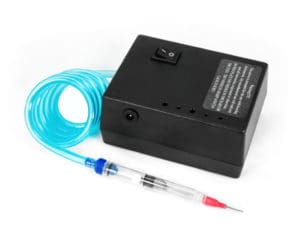 This thing works WONDERS on your in-ear monitoring headphones. I’m serious. It’s essentially a little vacuum that gets ALL of the earwax out of your IEMs. Those little earwax removal tools that come with your headphones are nice, but a lot of times, they just pack the earwax deeper inside of your IEMs.
This thing works WONDERS on your in-ear monitoring headphones. I’m serious. It’s essentially a little vacuum that gets ALL of the earwax out of your IEMs. Those little earwax removal tools that come with your headphones are nice, but a lot of times, they just pack the earwax deeper inside of your IEMs.
This unit is a little pricy, right under $100, but it’s 100% worth it. Instead of purchasing one of these for yourself, it could be a great idea to get one for your worship team to share or see if your worship leader has room in their budget to get one for the team. Here’s what I use!
#4 Headphone Extension Cable
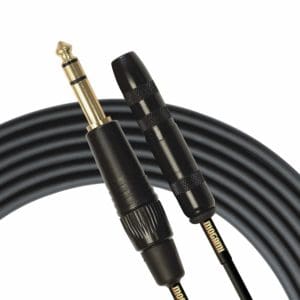 This is one of the more expensive items on this list, but I can’t recommend it enough. It’s the most reliable and durable headphone extension cable that I have ever used.
This is one of the more expensive items on this list, but I can’t recommend it enough. It’s the most reliable and durable headphone extension cable that I have ever used.
Since I started using this headphone extension cable and the headphone adapters I mentioned earlier, I have had the BEST experience with my IEMs at gigs and at home in my studio.
I also been using this cable for over 2 years and haven’t had it cut out or buzz once. It’s amazing and makes playing and recording a lot more enjoyable.
Mogami makes two versions of this cable, the 10ft and the 25ft. I got the one that is 10ft because it is significantly cheaper and it doesn’t take us as much room in my gig bag. Here’s what I use!
#5 Backup IEM Cable
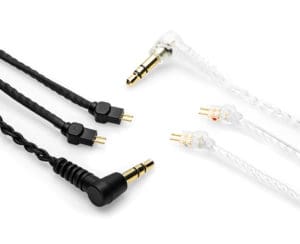 I always keep a spare IEM cable in my gig bag. There’s nothing worse than showing up to an event, and your headphones start cutting in and out because your cable is going bad. I like to have an extra one of these because it’s not something that you can quickly get at a Guitar Center if it goes out.
I always keep a spare IEM cable in my gig bag. There’s nothing worse than showing up to an event, and your headphones start cutting in and out because your cable is going bad. I like to have an extra one of these because it’s not something that you can quickly get at a Guitar Center if it goes out.
A lot of these cables are specific to the company that you ordered your in-ears from, so you usually have to order them online and have them shipped to you.
I’ve been using the same pair of IEMs from 64 Audio for around 6 years now and have only had 2 cables go out on me. It’s not a super frequent thing to break down, but it’s nice to have a backup for when it does.
In the list below, I created links to extra cables from a couple of different IEM companies.
What I use:
#6 Mono Case
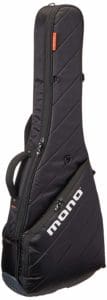 If you’ve ever been through the Nashville airport, then you definitely know what this. It seems like 1 out of every 3 Nashville residents have one of these on their back. Ok, maybe I’m exaggerating a little bit, but these things are everywhere, they are amazing, and there is a reason that pro musicians use these all of the time
If you’ve ever been through the Nashville airport, then you definitely know what this. It seems like 1 out of every 3 Nashville residents have one of these on their back. Ok, maybe I’m exaggerating a little bit, but these things are everywhere, they are amazing, and there is a reason that pro musicians use these all of the time
I LOVE these cases because they are extremely protective, lightweight, they hold a ton of stuff, they look nice, and they are comfortable too. I trust these soft cases more than most of my hard cases because they have way more padding on the inside, and people tend to be gentler on them because they think it’s a normal gig bag.
I have stopped using hard cases altogether because of how protective the Mono cases are. I own the M80 Vertigo Electric case, the M80 Dual Electric case, the M80 Acoustic case, the Tick 2.0 (an awesome attachment bag that connects to any of their guitar cases), and a M80 Keyboard case for my wife’s keyboard.
Out of all of the cases that I have, the Dual Electric case and the Tick 2.0 are definitely my favorites. For years I only had one guitar and never needed anything like this, but since I’ve been a full-time musician, it’s so nice to have a case that I can carry or wear like a backpack.
The Dual Electric case can get pretty heavy, but it’s so nice and easy to travel with. On larger planes, it even fits in the overhead bin; however, on some of the newer airplanes, they have completely changed the overhead bin design so that guitars don’t fit at all.
The Tick gives me the option and the space to bring my own mics, extra cables, slides, picks, a change of clothes, a camera, etc. I love it because it attaches to any of the Mono guitar cases so I have a lot of options for bringing stuff when I’m traveling to play.
What I use:
M80 Vertigo Electric Guitar Case
#7 SGI Boxes
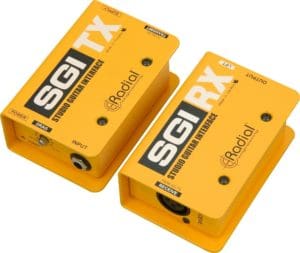 These magical boxes will make your sound guy/gal smile like you’ve never seen them smile before.
These magical boxes will make your sound guy/gal smile like you’ve never seen them smile before.
Essentially, they can take your guitar signal up to 300’ away without any signal degradation or loss. This will allow you to put your amp far away from the stage in a closet, office, or a random room and turn it up pretty loud to get the tones you want without adding any stage noise. These things are a saving grace when you are playing in smaller churches/venues and need to keep the room as quiet as possible.
So how do these things work, and how many do I need? Great questions!
The output of your pedalboard will plug into the TX box with a 1/4” cable, the TX box will connect to the RX box via a XLR cable (you can daisy chain XLRs if you need to, but try to keep it under 300 feet so you don’t lose signal/high end), and the RX box will plug into the input of your amp with a 1/4” cable.
Check out this diagram below for a visual:
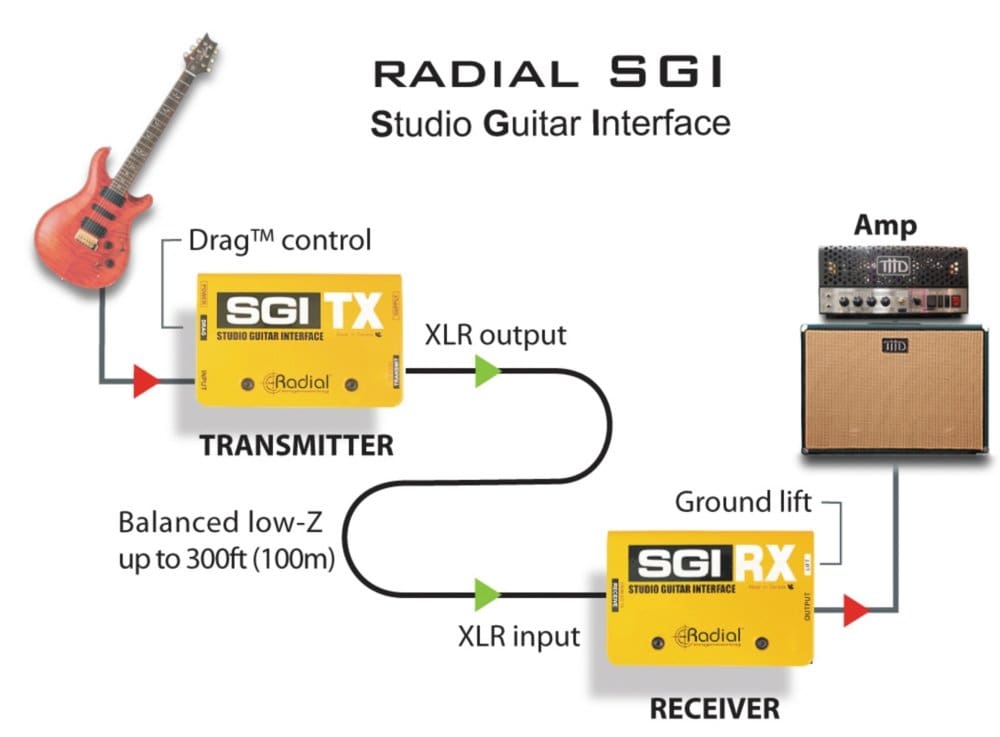
So, you are going to need 1 TX box and 1 RX box for one amp (when you buy these off of Amazon, Sweetwater, etc. they come with one TX box and one RX box).
If you want to run two guitar amps (stereo), you are going to need to order two of these so that you will have 2 TX boxes and 2 RX boxes. Just make sure you label them, so know what’s going where.
Another company, called TA Solutions sells a product that does the same thing as the Radial SGI boxes.
I have not personally used anything from TA Solutions, but I have a couple of friends that use them and love them. I put the links for both down below for you to check out.
What I use:
TA Solutions (Mono + Stereo Options)
#8 Pedalboard Upgrades
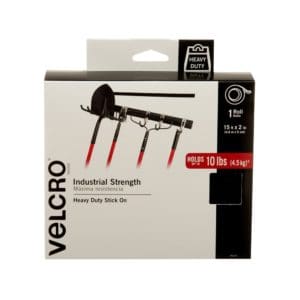 Over the past several years, I’ve made some upgrades to my pedalboard that have been huge improvements. One of the ones I briefly touched on earlier in my story from Miami was Industrial Strength Velcro.
Over the past several years, I’ve made some upgrades to my pedalboard that have been huge improvements. One of the ones I briefly touched on earlier in my story from Miami was Industrial Strength Velcro.
Flying with a pedalboard can be somewhat of a terrifying experience when you first start doing it.
One of my first experiences of flying to an event was awful! I opened up my pedalboard, and it looked like a hurricane happened inside of my case. Pedals were thrown around everywhere, some of them had huge scratches and dints, most of my solderless patch cables didn’t work, etc. You get the picture. It was bad—definitely not in any shape for me to use it to play live.
After that event, I swapped out all of the Velcro on the bottom of my pedals with Industrial Strength Velcro and from then on, nothing has moved during any form of travel. I can pick up my entire pedalboard off the ground just by holding onto a small JHS Morning Glory overdrive pedal, and the pedal DOES NOT MOVE.
I wasn’t joking about the spatula underneath of my pedalboard—it’s literally a lifesaver.
Another big pedalboard upgrade I’ve made was using standard Zip Ties to tie down all of the power cables and patch cables underneath of my pedalboard. This has made my cables last way longer because they aren’t moving around so much when I’m traveling.
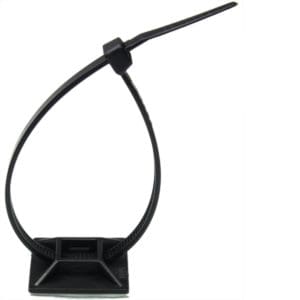 I attach these Zip Ties to Adhesive Mounts to make sure that the zip ties and the cables stay in place.
I attach these Zip Ties to Adhesive Mounts to make sure that the zip ties and the cables stay in place.
What I use:
#9 Backup Patch Cables + Power Cables
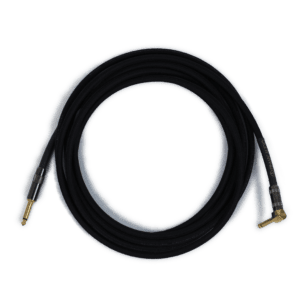
Remember that embarrassing story I told you earlier about that one thing at that one place? Yeah, I’m trying to remove that wound from my memory, but I’m going to bring it up one more time to hopefully help you avoid making some of the same mistakes that I’ve made.
A spatula would have really helped me to get the pedal off, but it wouldn’t have fixed the bad patch cable.
At the time, I was using solderless cables on my pedalboard and if you only take one thing away from this entire post, remember:
RUN FAR FAR AWAY FROM SOLDERLESS PATCH CABLES
They are cool and trendy because you can make them the exact length you want (blah blah blah), but simply, they are unreliable, and they aren’t made for touring musicians. Even if your pedalboard never moves, I would still recommend staying away from them.
Ok. Rant over.
So now, after the unspeakable event, I have a couple of extra soldered patch cables that I bring with me to every event that I’m at. I have four 18” cables (two red and two black) that I use in case the event has SGI boxes that I can use (I don’t bring SGI boxes with me when I travel). I also bring a 3’ cable that can reach between any two pedals on my pedalboard in case a cable goes out while I’m playing.
The last backup cable that I bring with me to gigs is a pack of extra power supply cables. It’s pretty rare, but I have had a couple of these go out on me through the years so I always leave 1-2 of these in my Mono Tick or gig bag in case one of these cuts out.
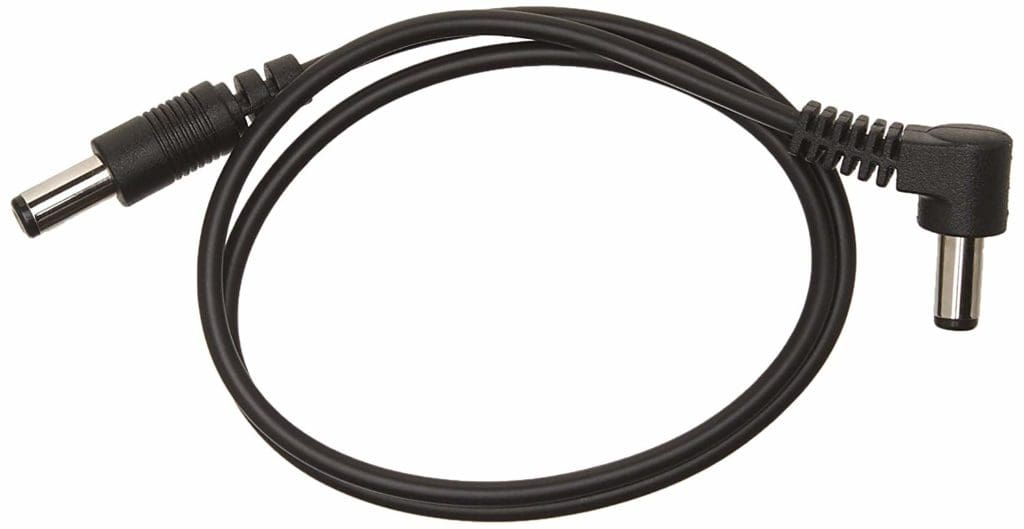
What I use:
Runway Audio Instrument cables
#10 Junction Box + Master Mute
 What is a junction box, and why do I need one? Wow, you are asking some great questions today!
What is a junction box, and why do I need one? Wow, you are asking some great questions today!
A junction box is like the Swiss Army Knife for pedalboards.
It does everything, and if you are running two electric guitar amps, I would definitely recommend saving up for one of these bad boys. I’m using the TX Underfacer from Goodwood Audio, and it rules.
First of all, it goes underneath your pedalboard so that it doesn’t take up any extra space on top. This is a huge benefit because that pedalboard real estate is almost as precious as Frodo’s ring. Gollum would probably disagree with us, but let’s agree to forgive him and move on.
The Underfacer is the first AND last thing in your signal chain. It takes care of all your input, muting, tuning, summing, isolating, and phase correcting needs and will be completely hidden underneath of your pedalboard.
I noticed a much cleaner and clearer sound when I started using it, and I don’t think I would run stereo without it. I also got the Goodwood Audio RMT so that I would be able to control the Master Mute and Stereo Summing feature without having to turn my pedalboard upside down.
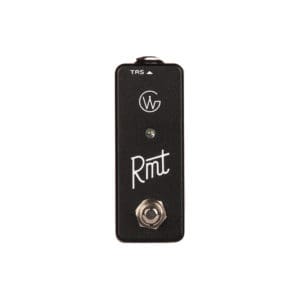 Having the ability to mute my entire signal chain (even my delays and reverbs) with the press of a button is so handy when you need a hard stop in a song or if you need to mute the signal going to your amps so that you can work on a pedal, fix a patch cable, or swap out pedal without sending that awful noise through your amps and to the FOH speakers. Unfortunately, I did NOT have this mute switch when my pedalboard died in Miami…
Having the ability to mute my entire signal chain (even my delays and reverbs) with the press of a button is so handy when you need a hard stop in a song or if you need to mute the signal going to your amps so that you can work on a pedal, fix a patch cable, or swap out pedal without sending that awful noise through your amps and to the FOH speakers. Unfortunately, I did NOT have this mute switch when my pedalboard died in Miami…
The Stereo Summing feature is also nice because I can go from stereo to dual mono instantaneously in a set or I can play a gig with only one amp without having to rewire my pedalboard (one of the main problems of running a stereo rig). It’s also nice to be able to flip the phase of one of my amps from the pedalboard and fix any ground loop noise issues from power.
What I use:
I hope this has been helpful! Feel to comment below with any questions or tips you have about what guitar accessories have helped you!
You may also be interested in these resources!
- Why You Should Stop Buying Guitar Pedals
- 3 Big Myths About Worship Guitar Tone
- Guitar Technique: How to Play Faster and Cleaner with Benjamin Forehand
- Worship Guitar Tone Master Class
- Mastering Your Fretboard & Transposing Lead Guitar

![Palm Sunday Worship Songs 2024 [w/ Tutorials]](https://worshiponline.com/wp-content/uploads/2024/02/Post-Graphic-no-title-only-watermark.png)

![Top Easter Worship Songs 2024 [With Tutorials]](https://worshiponline.com/wp-content/uploads/2023/01/Post-Graphic-no-title-only-watermark.png)
![Top Easter Worship Songs 2024 [With Tutorials]](https://worshiponline.com/wp-content/uploads/2023/01/Post-Graphic-no-title-only-watermark-1024x536.png)
![Palm Sunday Worship Songs 2024 [w/ Tutorials]](https://worshiponline.com/wp-content/uploads/2024/02/Post-Graphic-no-title-only-watermark-1024x536.png)
